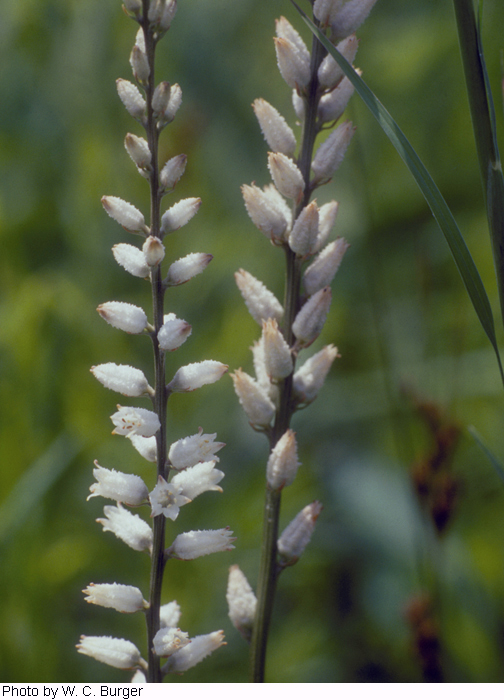
|
Family: Nartheciaceae |
Herbs, perennial, scapose, rhizomatous. Leaves in dense basal rosettes, clasping erect branches; blade narrowly linear to lanceolate, oblanceolate, linear-elliptic, or elliptic, flat, leathery, distal margins fused to form subulate tips. Scape 2-10 dm. Inflorescences racemose. Flowers each subtended by 2 subulate, unequal bracts, short-pedicellate; perianth white, yellow, or golden orange, cylindrical, campanulate, or obovoid, abaxial surfaces rough; tepals 6, connate basally; stamens 6, included; filaments adnate to perianth; anthers oblong-lanceolate, longer than filaments; ovary half inferior with proximal portions of perianth adnate at maturity; style 3-branched at apex. Fruits capsular, 3-locular, beaked. Seeds amber, deeply sulcate, ellipsoid to ovoid, 0.5-0.8 mm, lustrous. Some species of Aletris (e.g., A. lutea and A. obovata) are quickly eliminated unless habitats are occasionally burned or otherwise kept clear of undergrowth.
Fls perfect; perianth tubular to campanulate, 6-lobed, adnate to the lower part of the ovary; stamens 6; filaments short, inserted at the top of the perianth-tube; anthers linear, introrse; style straight, barely 3-lobed, with minute stigmas; fr a loculicidal capsule enclosed by the persistent, withered perianth; seeds numerous, minute, fusiform; perennial herbs from a short, stout, praemorse rhizome or a mere crown, with a basal rosette of narrow lvs, an erect stem bearing bract-like lvs, and a terminal spike-like raceme; perianth roughened with numerous short, scale-like points, giving it a mealy appearance. 25, N. Amer. and e. Asia. Gleason, Henry A. & Cronquist, Arthur J. 1991. Manual of vascular plants of northeastern United States and adjacent Canada. lxxv + 910 pp. ©The New York Botanical Garden. All rights reserved. Used by permission. |
This project was made possible in part by the Institute of Museum and Library Services [MG-70-19-0057-19].
Powered by Symbiota



